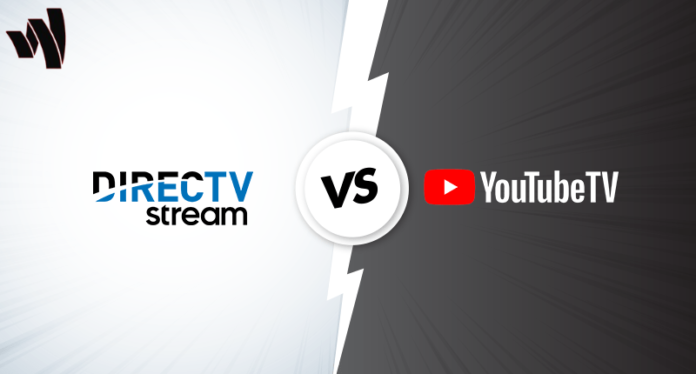In today’s rapidly evolving media landscape, the way we consume television content is undergoing a profound transformation. With the rise of streaming services, traditional cable and satellite TV providers are facing stiff competition from digital platforms that offer flexibility, convenience, and a plethora of options. Among the frontrunners in this streaming battle are YouTube TV vs DIRECTV Stream. Let’s delve into a comprehensive comparison to understand the nuances and benefits of each platform.
Understanding YouTube TV
YouTube TV, launched in 2017, swiftly gained popularity as a live TV streaming service offered by YouTube, a subsidiary of Google. It provides subscribers with access to live television from major broadcast and cable networks, including sports, news, and entertainment channels, accessible through various devices connected to the internet.
One of the key attractions of YouTube TV is its simplicity and user-friendly interface. Unlike traditional cable subscriptions, YouTube TV requires no long-term contracts or expensive equipment installations. Subscribers can stream live TV on multiple devices simultaneously, making it an ideal choice for families with diverse viewing preferences.
Features and Content Offerings
YouTube TV boasts a diverse lineup of channels, encompassing popular networks such as ABC, CBS, NBC, ESPN, and more. Its cloud DVR feature allows users to record unlimited content and store it for up to nine months, offering unparalleled flexibility in managing their viewing schedules. Moreover, YouTube TV offers seamless integration with the YouTube platform, enabling users to access exclusive content and personalized recommendations.
Exploring DIRECTV Stream
Formerly known as AT&T TV, DIRECTV Stream is a streaming service offered by AT&T, designed to deliver live TV and on-demand content over the internet. Launched in 2020, DIRECTV Stream aims to cater to the evolving preferences of modern consumers by combining the convenience of streaming with the extensive channel lineup traditionally associated with satellite TV.
Features and Content Offerings
DIRECTV Stream distinguishes itself with its robust selection of channels, including premium networks like HBO, Showtime, and STARZ, along with regional sports networks and international programming options. The service offers multiple subscription tiers, allowing users to customize their channel lineup according to their preferences and budgetary constraints.
One of the standout features of DIRECTV Stream is its 4K Ultra High Definition (UHD) support, enabling subscribers to enjoy select content in stunning clarity and detail. Additionally, DIRECTV Stream provides access to thousands of on-demand titles and offers optional add-ons such as NFL Sunday Ticket for sports enthusiasts.
A Comparative Analysis
When comparing YouTube TV vs DIRECTV Stream, several factors come into play, including pricing, channel selection, features, and overall user experience. While both platforms offer compelling options for cord-cutters seeking alternatives to traditional cable TV, there are distinct differences that may influence individual preferences.
Pricing and Subscription Plans
YouTube TV offers a single subscription plan priced at a competitive rate, with no hidden fees or additional costs. In contrast, DIRECTV Stream offers multiple subscription tiers, each with varying channel lineups and price points. While the base package may seem affordable, additional fees for equipment rental and premium channels can significantly impact the overall cost.
Channel Selection and Content Variety
Both YouTube TV vs DIRECTV Stream provide access to a wide range of channels, including live sports, news, entertainment, and lifestyle programming. However, the availability of local channels and regional sports networks may vary depending on the subscriber’s location and the service provider’s licensing agreements.
User Experience and Accessibility
In terms of user experience, YouTube TV excels with its intuitive interface, seamless navigation, and cross-platform compatibility. The service is accessible on smartphones, tablets, smart TVs, and streaming devices, ensuring that subscribers can enjoy their favorite content anytime, anywhere. On the other hand, DIRECTV Stream offers a more traditional TV-like experience, with a familiar grid-based channel guide and remote control functionality.
Conclusion: Making an Informed Choice
In the ongoing battle between YouTube TV vs DIRECTV Stream, there is no one-size-fits-all solution. Ultimately, the decision comes down to individual preferences, budgetary considerations, and viewing habits. While YouTube TV appeals to users seeking simplicity, flexibility, and affordability, DIRECTV Stream caters to those who prioritize channel variety, premium content, and enhanced viewing experiences.
As the landscape of television continues to evolve, competition among streaming services will undoubtedly intensify, driving innovation and empowering consumers with greater choice and control over their entertainment options. Whether you opt for YouTube TV, DIRECTV Stream, or explore other alternatives, the future of TV remains exciting and full of possibilities in the digital age.

